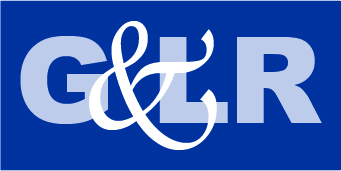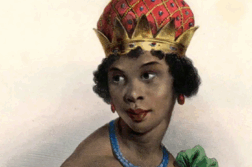NOVEMBER 1978 MARKS the thirtieth anniversary of the defeat of Proposition Six, the infamous Briggs Initiative, in California, which would have barred lesbians and gay men from teaching in state public schools. The victory for gay rights advocates came after a string of stunning defeats in referendum battles to repeal local gay rights laws that started in Miami in June 1977 and continued into the spring of 1978, reaching to St. Paul, Minnesota, Wichita, Kansas, and Eugene, Oregon. For lesbians and gay men, these campaigns were an emotional rollercoaster of despair and elation. For the rest of America, these referendum battles received nationwide media coverage and produced the first nationwide debate about gay rights in the U.S. The anti-gay campaigns of 1977–78 live on in the memory of many lesbians and gay men to this day. For many, these events marked their first involvement in political activism, whether it was working in one of the various campaign efforts, protesting against Anita Bryant, donating money to a gay rights organization, or simply not drinking orange juice.
It can also be said that these campaigns marked the beginning of a national lesbian and gay political movement. While previously a number of politically active lesbian and gay communities existed across the country, there was little connection among them. The National Gay Task Force, then the only national gay political organization, had a membership in the low four figures. The only viable national lesbian and gay organization was the Metropolitan Community Church. The only publication reaching a national lesbian and gay audience was David Goodstein’s The Advocate. Most lesbians and gay men were still in the closet. The Briggs–era campaigns made lesbians and gay men aware that they were, in fact, a national community with a separate identity and a political capability. From the energies that were created in these campaigns came the first national lesbian and gay march in Washington, D.C., in October 1979, which drew over 75,000 GLBT people from all parts of the country.
While it is important to appreciate the impact of these campaigns on the lesbian and gay community, it is also important to understand their place in the larger political dynamics of American society. Most histories of the GLBT rights movement—an example would be Dudley Clendinen and Adam Nagourney’s Out for Good: The Struggle to Build a Gay Rights Movement in America (1999)—place these events in a narrative that begins with the Stonewall riots in June 1969 and limit the scope of their analysis to the lesbian and gay community. Yet such a focus obscures the emergence of the post-war gay rights movement as part of a larger dynamic occurring in post-war America. From the 1950’s into the 70’s, the U.S. was finally confronting the history of its shameful treatment of its marginalized groups. In his book The Minority Rights Revolution (2002), political sociologist John Skrentny argues that the black Civil Rights movement of that era transformed American political culture by creating a new and powerful national narrative about minority group identity, oppression, and struggle. While the 1964 Civil Rights Act outlawed discrimination on the basis of “race, color, religion, sex, national origin,” and while it theoretically covered all American citizens, its subsequent implementation focused on those groups that lawmakers and policymakers saw as particularly victimized by discrimination—first African-Americans, then women, followed by Hispanics and other ethnic minorities, and, somewhat later, the physically disabled. Using what Skrentny terms the “black analogy,” government policymakers, the media, and the public in general placed these designated groups within the larger narrative of minority group oppression and victimhood that, “while unspoken, undebated and unlegislated, nevertheless powerfully shaped policy.” Like these other groups, lesbians and gay men met the basic requirements of a minority group deserving protection from discrimination. They were subject to a vast array of discriminatory local, state, and federal laws and policies. Those who were so bold as to be open about their sexuality were conspicuous victims of discrimination at every level of society. Pioneer homosexual rights activists felt a strong kinship with the growing Civil Rights movement in the 1950’s and were actually the first minority group to copy their tactics of peaceful protest, picketing several government agencies in Washington, D.C., in 1965 to protest the federal ban on homosexual hiring. Nevertheless, it took until the mid 1970’s for there to be a widespread recognition of lesbians and gay men as a minority. In much the same way that theories of black racial inferiority have been stripped of their legitimacy by science, earlier theories that pathologized homosexuals were now being rejected by medical and scientific authorities. The older media images of homosexuals as criminals and sickos were now being replaced by more neutral and even positive portrayals. Similar to laws on segregation, laws restricting the rights of homosexuals were now viewed as outmoded and unjust and states were moving to repeal them. Instead, cities and counties across the country were banning discrimination at the local level. By January 1977, over thirty cities and counties had some type of law or policy barring discrimination against lesbians and gay men. Even Tulsa, Oklahoma, the “buckle of the bible belt,” was on the verge of passing a gay rights law. A number of states were close to passing state-wide laws. Similar legislation was introduced in Congress. Jimmy Carter, running for president in 1976 on a platform that emphasized human rights, promised attention to the concerns of America’s lesbians and gay community. Soon after his inauguration, gay rights leaders were invited to the White House to discuss their issues. At the same time, a growing movement of religiously motivated social conservatives was viewing these changes—other social and cultural changes associated with the Sexual Revolution—with increasing alarm. From within Protestant denominations such as the Southern Baptist Convention came calls for greater political activism. Religious conservatives took part in the national movement against the Equal Rights Amendment for women’s equality, and they organized local campaigns against pornography and sex education in school. In the spring of 1977, gay rights was added to their hit list when local religious and political conservatives in Miami organized a campaign to repeal Dade County’s gay rights law. Led by entertainer Anita Bryant, the campaign attracted national and international attention. At first lesbian and gay leaders assumed that few people would believe her claims that gay men were child molesters and seducers of the young. But it soon became evident that the outmoded theories and media images of homosexuality as a sickness and perversion, now joined by conservative religious condemnations, still had a very powerful hold on the public imagination. Voters repealed the law by an overwhelming majority. The following year, the successful repeal campaigns in St. Paul, Wichita, and Eugene seemed harbingers of a national counter-movement. Previously supportive national political figures quickly distanced themselves. The media began to treat gay activists’ claims to minority status with increasing skepticism. Even lesbian and gay leaders themselves began to recognize the futility of casting their claims within the narrative of minority rights. If lesbians and gay men were no longer viewed as a minority deserving of protection against discrimination, what was their status in American society? Was the fledgling progress of the 70’s about to be replaced by an era of Jim Crow-style legislation? It seemed so. States from Alabama to New Jersey began considering measures to recriminalize homosexuality and further restrict the rights of lesbians and gay men. The showdown came in California in the fall 1978 elections. There, conservative state Senator John Briggs, hoping to incite another Miami-style campaign, placed a measure on the state ballot banning lesbians and gay men from teaching in public schools. Early polls showed that over sixty percent of California’s voters supported it. Lesbians and gay men feared that this was only the beginning of a larger effort to further restrict them from other areas of public employment and state-regulated professions. However, Briggs had overreached: the proposal was written so broadly that even heterosexual teachers favoring gay rights were affected. Gay activists opposing the measure were joined not only by liberals and union leaders but by noted conservatives such as Ronald Reagan, who saw it as a serious attack on the rights of all California citizens. The measure lost by over a million votes. In the aftermath of the California campaign, the political attacks against gay rights began to recede, at least for a while. Conservative religious leaders continued to use anti-gay rhetoric to mobilize their followers into what was becoming a powerful national movement of right-wing religious zealots. But more significantly, the overall terms of the debate about gay rights had been set. If the campaigns in Miami, St. Paul, Wichita, and Eugene had had their way, lesbians and gay men were not defined as a minority and had no claim to protection against discrimination based on sexual orientation. The California campaign showed that there was sufficient support for gay rights to defeat a measure that stigmatized GLBT people and restricted their rights. Even if the rejection of Briggs was not out of any concern for the rights of lesbians and gay men, many voters recognized that such measures could ultimately affect the rights of heterosexuals as well. Since the campaigns of the late 70’s, the battle over the legal status of lesbian and gay men and their rights continues to be fought on many fronts in a kind of cultural and political trench warfare. Progress is measured not in miles but in inches. In contrast to the 1960’s, when major political and social leaders worked to create a national consensus in support of civil rights, most leaders today keep the gay rights issue at a comfortable distance. Lacking official minority status at the federal level, lesbians and gay men also lack the narrative of minority rights and thus the language to argue their case. While in some states and local areas the fundamental rights of lesbians and gay men are recognized, at the national level their status remains in limbo. Nevertheless, there is cause for hope. If we date the African-American rights movement as the founding of the National Association of Colored People (naacp) in 1909, then it took decades to chip away at the seemingly invincible edifice of racism before the massive upheavals of the 1950’s and 60’s finally bore fruit. Perhaps it is their perseverance in this protracted but ultimately successful struggle, and not the argument of minority rights, that should serve as the lasting legacy of the Civil Rights movement for gay activists today. Fred Fejes is professor of Communication and Media Studies at Florida Atlantic Univ. and author of Gay Rights and Moral Panic: The Origins of America’s Debate on Homosexuality (Palgrave/Macmillan, 2008).




